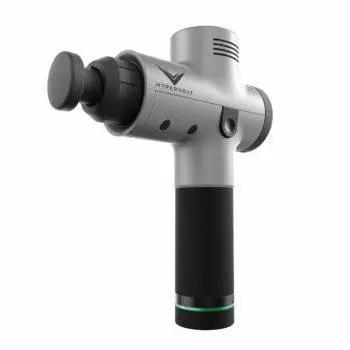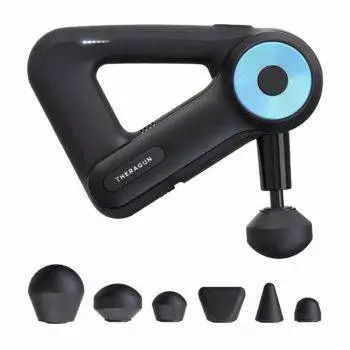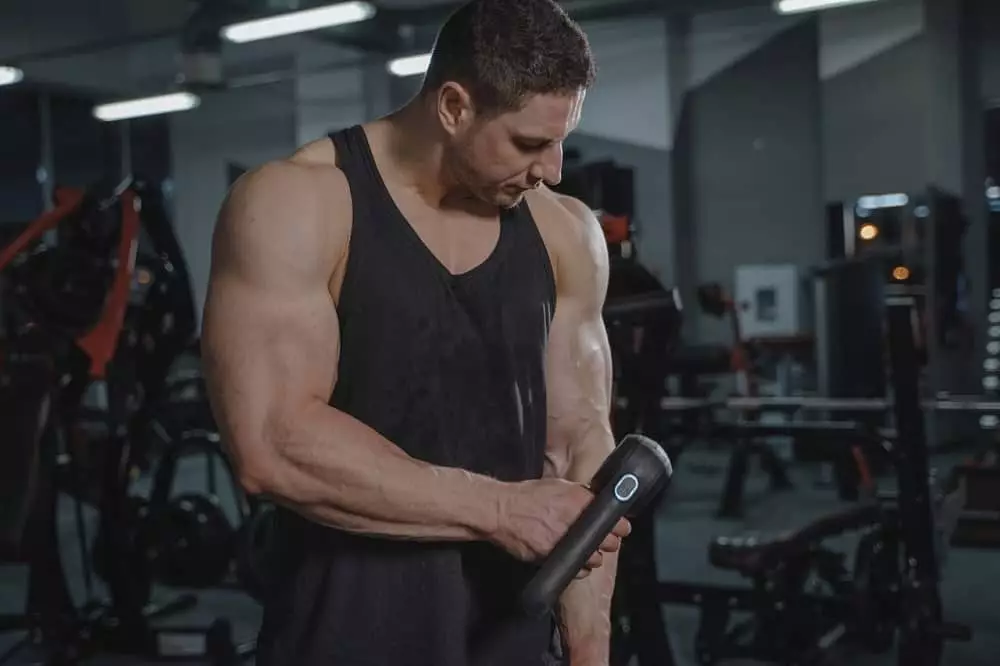Percussion massagers have created a whole lot of buzz lately in the muscle recovery tool segment for several good reasons.
Getting a massage from a massage therapist can be a totally life-changing experience, where you feel lighter, less stressed, and your pain easing away almost instantly.
With a percussion massager, you can enjoy similar benefits of a therapist massaging your aching muscles anytime you want, and anywhere you are.
But have you ever wondered how do percussion massagers work, and what makes them a hit among leading athletes worldwide?
Percussion massagers work by providing accelerated bursts of pressure deep into the tissues of your body. These rapid bursts of pressure help release muscle knots, which are regarded as the primary culprits for back and shoulder pain.
What is Percussion Massage Gun?
You’ve probably seen celebrities and sportsmen and women flaunt their massage guns on social media, or on the covers of leading fitness publications.
Percussion guns aren’t cheap, where the TheraGun Pro — one of the best devices you can get your hands on in the percussive therapy field retails for approximately $599.
This high-end price tag might lead you to question — are percussion massagers really worth it?
Also dubbed as massagers, massage guns, power massagers or muscle guns, percussion massagers are a great tool to add to your personal recovery arsenal.

Hypervolt Percussion Massage Gun
One of the original premium massage guns. Featuring Quiet Glide technology, the Hypervolt delivers powerful massages quietly. It’s one of our all time favourite massage devices!
How Do Percussion Massagers Work?
Most massage guns are compact, easy to use devices that are engineered to render constant, pulsating strokes to massage and release your muscles by increasing blood flow to these areas.
They offer what’s regarded as percussive or vibration therapy, and provide these rapid bursts via a specially designed head as it oscillates back and forth.
This type of massage therapy has been used by masseurs and masseuses for years by providing a series of gentle strikes from the hands and wrists to the targeted muscles for a rippling effect.
Massage guns aren’t the same as other myofascial massage tools such as foam rollers, which do sort of yield similar results, but do not hyper-target a specific problem area.
Adding to this, foam rollers are also often very uncomfortable to use owing to their manual operation.
The best massage guns step it up a few notches by providing a more streamlined, automatic and effective solution to getting the relief you need.
Studies indicate that percussive therapy is an effective method to prevent DOMS (delayed onset muscle soreness), so you won’t feel any muscle pain or tightness.
Massage guns mimic soft tissue massage techniques, and deliver highly targeted pulse vibrations to specific areas of your body including your back, quads, hamstrings, hands, feet, shoulders, neck and arms.
Contrary to popular belief, percussion massagers aren’t just geared towards athletes, but can be used by just about anyone looking to improve their flexibility and mobility. They come with several different massage heads such as:
- Big round head attachment – this attachment is an ideal choice to target big muscle groups such as hamstrings and quads.
- Flat head – this percussion massager attachment is great for full body massage and relaxation, and is specifically designed for smaller surface areas.
- Bullet head – built for highly targeted muscle treatment, the bullet head is an ideal choice for your hands and feet.

Theragun Pro
The Theragun needs no introduction! It’s one of the top premium percussion massage guns love by athletes and celebrities alike!
How to Use a Percussion Massager?
If you’re just getting your feet wet with a percussion massage therapy, the most important thing to remember is to resist the urge to use as much pressure as you can bear.
One of the common myths among massage gun users, is that going stronger or harder from the get go will actually release the knots in the muscles much more effectively.
But contrarily, starting with the most powerful setting on your percussion massager can cause your body to get tense, and as a result negate the positive benefits of the massage.
Experts advise that you use a percussion massager only on muscles that are either sore, or where feel tension and tightness, start at a lower speed setting, and work your way up.
If you’re using a percussion massager to relieve pain and tension in your neck and shoulders, start with a low to medium setting, and apply light pressure as you move the device from your chest to your armpit, and then the front of your shoulder for roughly 40 seconds.
To enhance the effectiveness of your percussion massager, you can add a few breathing exercises to the mix, which provide relief from sore muscles, and help you sleep better.
Here are three simple steps to get you started:
1. Turn on the percussion massager, but do not place it on your body yet to gain control over the massager (remember some of these devices can be heavy).
2. Now place the percussion massager on the area where you’d like relief, but do not add any pressure.
3. Glide the massage gun along the sore muscle, and stop in spots where you feel knots or tension, without adding any additional pressure.
Final Thoughts
Percussion massagers aren’t just a tool reserved for serious athletes, but are a great investment for anyone looking to improve their overall health, and feel darn good!
Massage guns work by increasing blood flow to reduce soreness and tension in your muscles through rapid vibrations.
However, a percussion massager should not be used in some cases where a massage isn’t recommended such as injuries.
If you suffer from any injuries or ailments, it is important that you speak with a medical professional first before resorting to any massage therapy.
